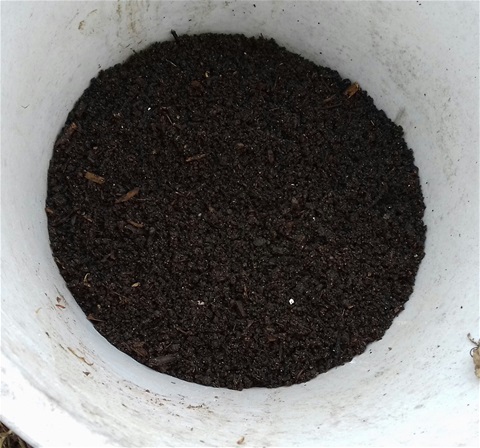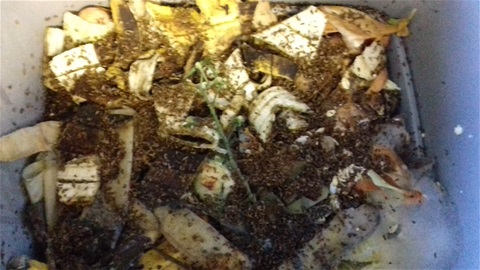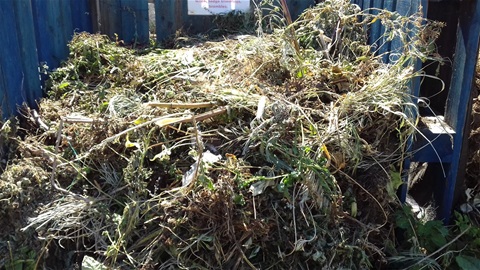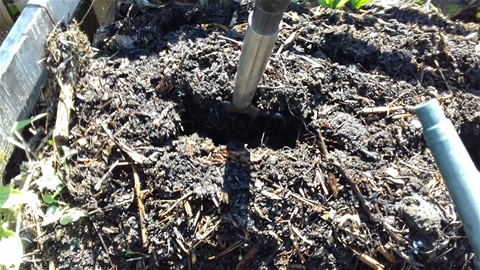Councils are moving towards providing weekly kerbside food waste collections, but many people are unhappy at the prospect of keeping food for up to a week prior to collection. Composting can offer an alterative .
It is often said that cooked
food waste cannot be composted. That statement needs qualification. Cooked food waste can be composted if the right type of bin is used such as a Green Johanna, Hotbin or Jora but these tend to be relatively expensive and as such are probably not appropriate
for the first time composter they do however work well and are easy to use.
A cheaper alternative is to buy two Blackwall Bokashi bins, ( available in the UK from for about £25 for the pair, and to use these to ferment the cooked
food waste to produce pre-compost which can then be added to the conventional compost bin. The bokashi bins can be kept indoors so that food waste from the plates can be scraped directly into the Bokashi bin. A bran is added and the bin sealed. I have detail
on the use of Bokashi at Bokashi Composting ( http://www.carryoncomposting.com/416920212 )
In this post we are looking at the food that can be fermented in a Bokashi bin abfore being composted.
Food suitable for the Bokashi treatment
Bones Smaller bones, such
as chicken bones can be added as can bigger bones which will be will be ”cleaned” by the process Bokashi and composting processes and can be removed when the compost is finally harvested.
Coffee grounds and
filters. The filters may be recognisable at the end to the fermentation process but breakdown will continue during the composting stage.
Cooked foods including plate scrapings. All solid foodse.g
fish, meat, pasta, rice, vegetables. Liquids e.g sauces, soups, etc should be soaked into a solid material such as , unless you soak them up in something bread or kitchen towel.
Dairy products. Solid products such asbutter
cheese, etc can be added to the Bokashi bin but. liquids such as milk or yogurt shoed be absorb into bread or paper .
Eggshells. Eggshell should beCrush the shells and add them to the binthe
fermentation decomposition is slow and this will be clearly recognised when they are eventually added to the compost bin as part of the fermented pre-compost.
Flowers, pot plants, herbs etc that have had their day. Just avoid soil from
pot plants, save it to use later in a ”soil factory” or in the garden.
Fruit and vegetable peelings. F to avoid taking up space in the Bokasshi binruit and veg peelings can be added but if you are producing a lot
of food waste they might be best added to the compost caddy for normal composting.
Tea bags please check Composting Tea
Bags to see which tea bags contain plastic as these should be emptied into the bin and tea leaves otherwise the whole bag can be put into the bin
Paper. Small quantities of kitchen roll and paper towels
contaminated with food waste can be added. Other paper is best recycled or shredded and composted .



